Adding an SSD Drive to an HP Microserver Gen8 Can be a Challenge
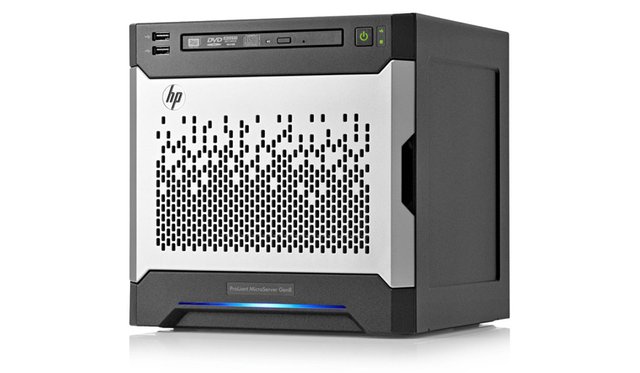
The HP Microserver is a really interesting piece of hardware as it offers home users an affordable and reliable solution for a network storage with up to 4 HDDs. It is enterprise grade feature rich hardware at an affordable price intended for small home and office users that are more advanced and would want to build their own network storage instead of rely on ready built solutions. I've been using the previous Gen7 solution from HP for a while and then switched to the new Gen8 Microserver and I can say that I'm pretty happy with the product, even though there are some minor drawbacks.
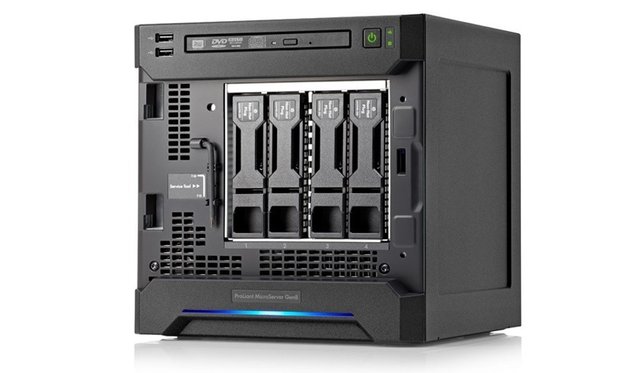
The HP Microserver Gen8 comes with 4x HDD bays, 1 slim optical drive bay, has two Gigabit network ports, 1 separate iLO network port for remote management, a PCI-E extension port and it all comes with a compact and good looking case. You need to install an operating system and configure the device as a network storage in order for everything to work as you would want it to. There are a number of options available for the default CPU and RAM configurations, but even the most affordable option with a G1610T CPU and 4GB RAM should be more than enough for you to get started with a good setup.
You can use the Microserver with less than 4 drives in a non-RAID or RAID setup, but the problem that arises is where to put the system drive with the OS. There are multiple options available, you can use an SD card or a USB flash drive and plug them directly to the motherboard. Since I wanted to use an SSD drive the obvious solution would be to just use the space designed for an optical drive and put it there, which is exactly how I used the previous Gen7 Microserver. Unfortunately the SATA channel used for the optical drive is normally not bootable, the only way to make it bootable is to set the SATA controller up in Legacy mode and that means no AHCI or RAID is usable.
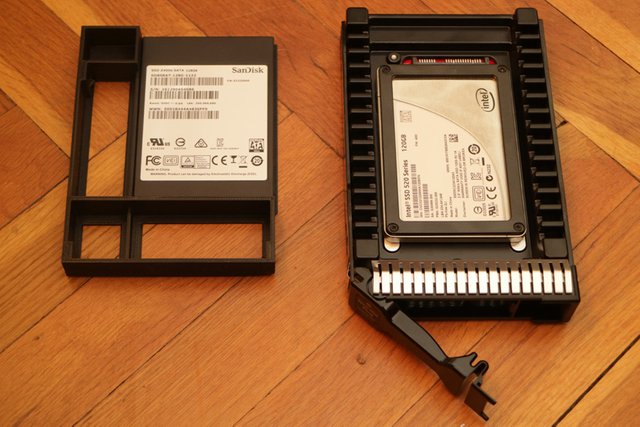
Since I'm not yet up to 4 drives installed the solution I went for is to add a 2.5-inch SSD system drive in one of the HDD bays, but that presents another challenge on the Microserver. The HDD caddies are hot-swappable and are designed only to accommodate hard drives with a 3.5-inch size and not smaller 2.5-inch HDDs or SSDs, so I had to do something in order to be able to insert the system SSD. The obvious solution when you have a 3D printer handy is to make an adapter that will accommodate the smaller SSD drive and allow you to attach it to the caddy, but there are also other alternatives available. One such alternative is to go for a second hand Western Digital Velociraptor HDD from eBay, the models that are with 2.5-inch HDDs with a 3.5-inch aluminum heatsink. You can get a good very deal for a used VelociRaptor 160GB Western Digital WD1600HLFS drive and remove the HDD from the aluminum holder and insert the SSD there and attach it to the HDD caddy of the Microserver.
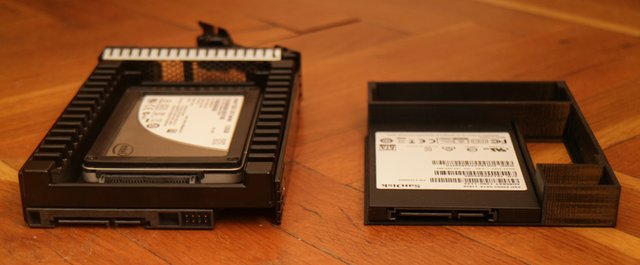
Regardless of the solution you use for inserting an SSD drive into the HP Microserver Gen8 you need to make sure that it has the SATA connectors positioned at the right place in order for the hot-swap functionality to work. There are number of adapters available for inserting a 2.5-inch drive into a 3.5-inch placeholder, but most of these will not work at the position of the SATA connectors will not match.
- 3D printable 2.5" HDD/SDD adapter for HP Proliant MicroServer Gen8...
- To get a Western Digital VelociRaptor WD1600HLFS on eBay...
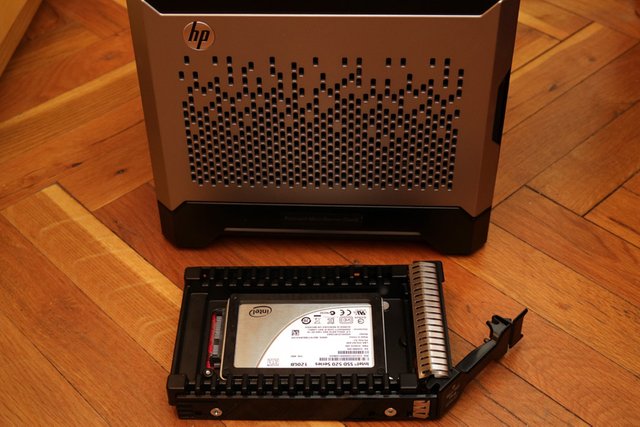
Originally I was using a 3D printed adapter, but then again recently switched to the caddy from a VelociRaptor HDD. Both of these work pretty well, but then again at some point they can become a non-working solution if you want to fill up all of the 4 available HDD bays with hard drives. Then the alternative could be to get a separate SATA/RAID controller on PCI-Express (half-height) and take advantage of the available slot on the motherboard of the Microserver.
If you have a question or want to add something, then please leave a comment below.
Did you like what you have just read? Check my other posts on steemit @cryptos
If you like what I'm doing for Steem and on Steemit you can support me as a Witness
I have been looking at one of these for he past 2 years and was never convinced they could fulfill all my expectations from a small server but I might actually get one. Besides all the specs, they're also good looking.
I heard they're not so lout either...
Well, it all depends on your needs... for mine they are almost perfect for the moment and the small issues I'm facing like the SSD support are not something that can be relatively easy to overcome anyway... ;)
The cooling can get noisy if the fan is at the maximum, but apart from the initial initialization when it maxes up for a moment I have never seen it go to the max... so under normal operation I can say it is actually pretty quiet.